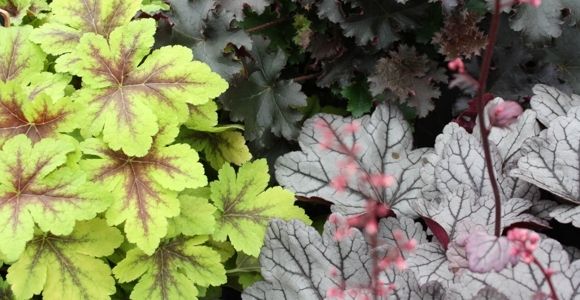Adding Late Colour in the Garden

Many gardens start to look a bit tatty towards late summer or autumn. Maybe that’s not a problem, because you’re spending less time out there. But maybe you’d like to keep looking at colour and flowers for as long as possible. In which case, have a look at our little guide to adding late colour in the garden, and see if you can’t make your garden fabulous for longer.
1) Keep feeding, watering and deadheading
This applies particularly to containers, but all plants will benefit from removal of dead leaves and regular deadheading. Unless you want to keep the seedheads for winter interest, you can cut them right down, and the plant will probably produce more. And it’s also a good idea to feed and water your plants regularly, as this will keep them happy. A mulch with a bit of new topsoil or compost won’t come amiss either (visit www.thecompostshop.co.uk for compost mulches).
2) Add some more plants
You have several choices when adding late colour, and garden centres and nurseries often have late summer flowering plants in stock now. You may even be able to find yourself a bargain if your local garden centre is trying to clear its plant stocks ready for the Christmas displays!
If you’re worried about spending lots of money on plants that won’t be flowering for long, choose perennials, as they will go on providing late colour in your garden for many years. Examples include asters, Rudbeckia, and Helenium species. Some gardeners also recommend Agapanthus, but they can be tricky.
Alternatively, buy exotic or tender plants that you can keep in their pots or containers, and plunge into the ground for instant impact. You’ll have to remove them again before the first frosts, and keep them somewhere frost-free over winter, like a greenhouse or cool conservatory. But if you have somewhere like that, that will be warm in spring, that will give them a headstart for next year, and they will probably flower again for you each year. Cannas or Brugmansia can be really good for this. Dahlias are also widely available, and will provide beautiful flowers until early November if watered and cared for. You will need to lift the tubers and store somewhere dry and frost free, replanting in spring.
Grasses also make a striking backdrop for late summer colour, and will also last into winter, giving you a bit more structure in your garden later in the year. And if you don’t mind spending money on plants that won’t last, then suitable annuals and tender perennials for late season colour include Osteospermum, Fuchsia and Zinnia.
With a bit of care and attention like this, you can keep your garden looking good well into autumn.
